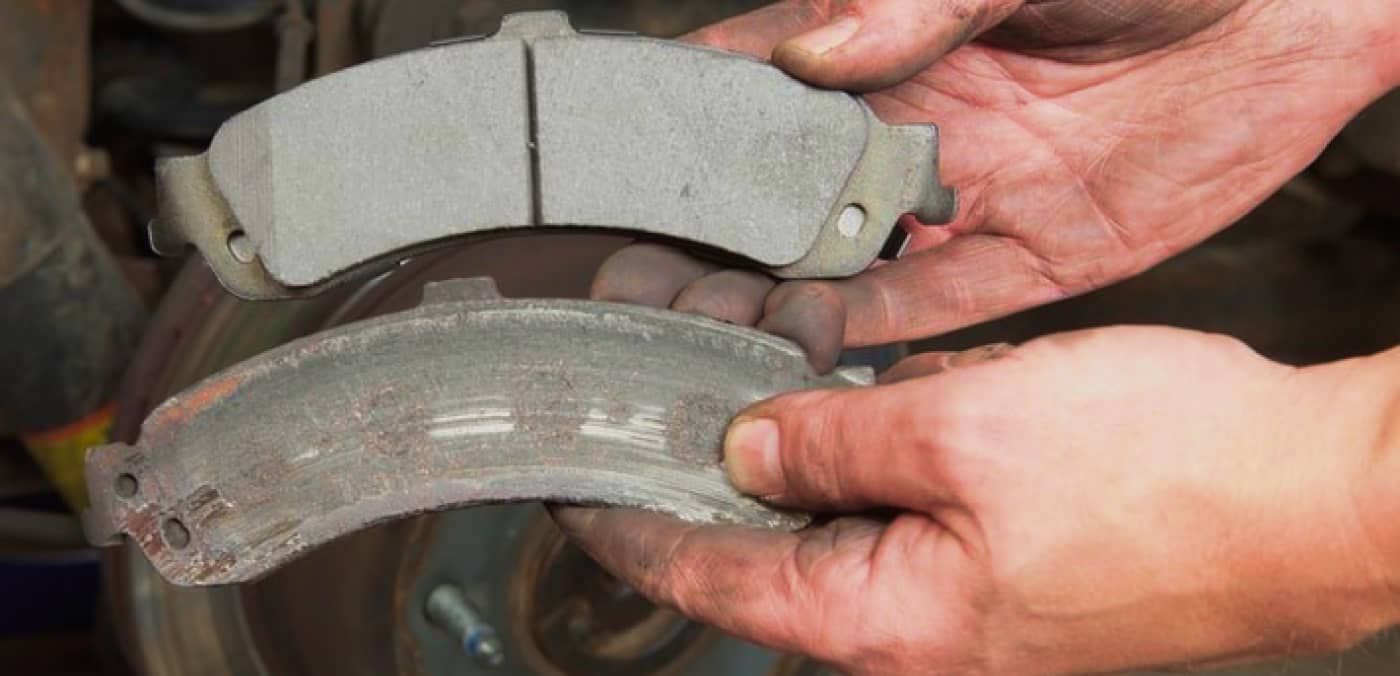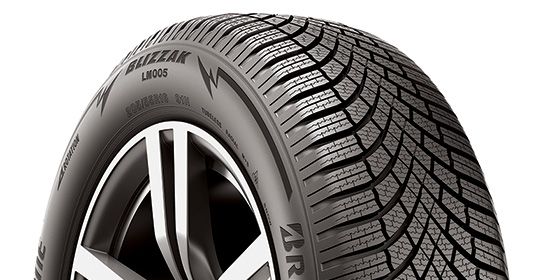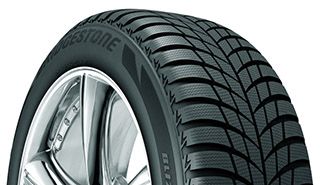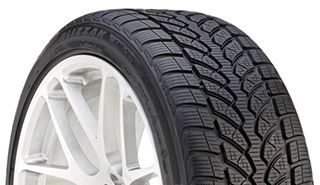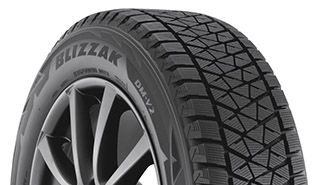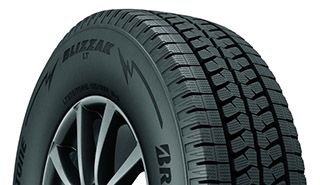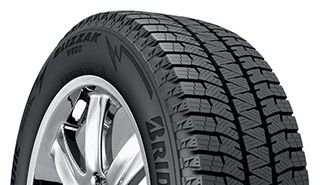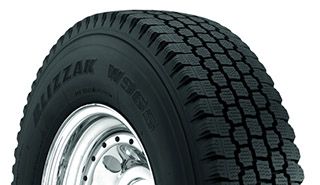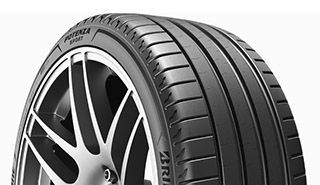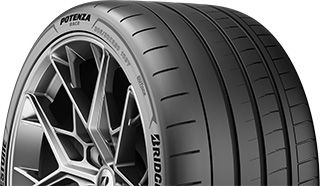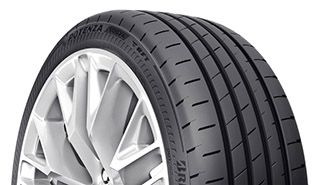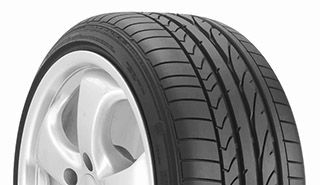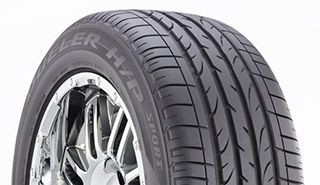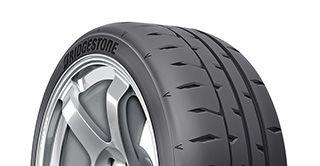Your braking system is perhaps the most critical safety mechanism in your vehicle. But while you rely on brakes every day to help you safely get from point A to B, you probably don’t think about what’s actually happening when you press on the brake pedal.
Here’s the basics of how the system works: when you step on your brake pedal, your car pushes pressurized fluid through its brake lines into a caliper at each wheel, where the brake pads are located. The brake fluid pushes the brake pads against a disc rotor in each wheel to slow it down, gradually bringing your wheels to a stop.
In other words, your brake system turns your car’s kinetic energy into thermal energy through friction applied by the brake pads. In this article, we’ll take a closer look at this critical component of your brake system and the pros and cons of each type — ceramic vs. semi metallic brake pads, for instance — to help you decide which is best for your vehicle and driving style.
A BRIEF HISTORY OF BRAKE PADS
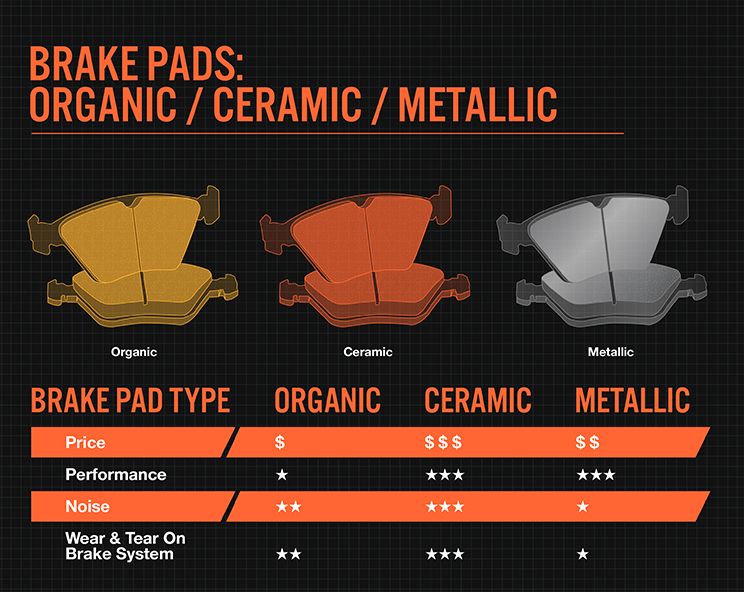
These days, drivers typically have a choice between three types of brake pads: ceramic vs. semi metallic vs. organic brake pads. That wasn’t always the case. The first use of brake pads goes all the way back to the 19th century. Bertha Benz — famous inventor and wife of Mercedes-Benz founder Karl Benz — is credited with creating the first brake pads out of leather for an early patent of their automobile in 1888.
Since then, the materials used to make brake pads have evolved with advances in technology. It wasn’t until the mid-to-late 20th century, as drum brakes were increasingly replaced by modern disc brakes, that manufacturers began producing the ceramic, metallic and organic brake pads used today.
ORGANIC BRAKE PADS
The brake pads in disc brakes were initially made from asbestos, a heat-absorbing material well-suited for the wear and tear that brake pads take on. However, asbestos was discovered to be a highly-potent carcinogen, causing cancer in those with prolonged exposure. When these asbestos-based brake pads had worn down, they would release asbestos into the air for drivers to unknowingly inhale. Manufacturers realized asbestos wasn’t a safe compound to use in braking systems. As a result, organic brake pads — or non-asbestos organic (NAO) brake pads — were created to fill the gap.
Organic brake pads, which come standard on about 67% of new vehicles sold within the United States, are made of a mixture of fibers and materials such as rubber, carbon compounds, glass or fiberglass, and KevlarⓇ, and are bound together with resin. They tend to produce less dust than some other types of brake pads, such as metallic pads, and are available at a lower price point.
Unlike performance brake pads, which are primarily used in heavy and high-performance vehicles, organic brake pads generate a moderate amount of friction without much heat being present, making them suitable for drivers who use their cars for everyday driving and commuting. Organic brake pads also tend to be quiet and don’t put much stress on the brake rotors, which is a plus since brake rotors are often costly to repair or replace if damaged.
However, organic brake pads do have some disadvantages when compared to other types of brake pads. Organic brake pads can tend to wear out more quickly because of their composite nature, meaning they might have to be replaced more often. They also tend to function best within a smaller range of temperatures. They don’t perform as well as semi metallic brake pads in extreme weather or when they are being pushed too hard and overheat. Organic brake pads also have a higher compressibility level, which means the driver has to press on the brake pedal with more force to engage them.
CERAMIC BRAKE PADS
Ceramic brake pads are made from material very similar to the type of ceramic used to make pottery and plates. Ceramic brake pad material, however, is denser and considerably more durable. Ceramic brake pads also have fine copper fibers embedded within them, to help increase their friction and heat conductivity.
Since they were developed in the mid-1980s, ceramic brake pads have consistently increased in popularity for a number reasons:
- Noise-Level: Ceramic brake pads are very quiet, creating little-to-no extra sound when the brakes are applied.
- Wear & Tear Residue: Compared to organic brake pads, ceramic brake pads tend to produce less dust and other particles as they wear down.
- Temperature & Driving Conditions: Compared to organic brake pads, ceramic brake pads can be more reliable in a broader range of temperatures and driving conditions.
Yet ceramic brake pads do have some limitations. Primarily, their cost: due to higher manufacturing costs, ceramic brake pads tend to be the most expensive of all brake pad types. Also, since both ceramic and copper can’t absorb as much heat as other types of materials, more of the heat generated by braking will pass through the brake pads and into the rest of the braking system. This can cause more wear and tear on other braking components. Lastly, ceramic brake pads aren’t considered the best choice for extreme driving conditions. If you’re facing very cold weather or an upcoming race and you’re choosing between ceramic vs. semi metallic brake pads, you’ll want to go with metallic.
SEMI-METALLIC BRAKE PADS
The final type of brake pad is the semi metallic brake pad. Semi metallic brake pads are different from fully metal brake pads in that they use fillers to create the pad compound instead of using 100% metal. Full metal brake pads are typically reserved for truly extreme braking requirements
Semi metallic brake pads are between 30% and 70% metal, including copper, iron, steel, and other composite alloys. These various metals are combined with graphite lubricant and other fillers to complete the brake pad. The metallic brake pad compounds available vary, each type offering their own advantages for everything from daily commutes to track racing.
For many drivers, especially those who value high-performance, the choice between ceramic vs. semi metallic brake pads is easy. Performance-driven drivers tend to prefer the metallic brake pads because they offer improved braking performance in a much more comprehensive range of temperatures and conditions. Because metal is such a good conductor of heat, metallic brake pads tend to withstand more heat while simultaneously helping braking systems cool back down more quickly. They also don’t compress as much as organic brakes, meaning less pressure needs to be applied to the brake pedal to affect stopping ability.
However, there are some disadvantages when it comes to metallic vs. ceramic and organic brake pads. Metallic brake pads tend to be noisier than their ceramic or organic counterparts, leading to a louder ride. Metallic pads also put more stress on the brake system, adding more strain and wear on the brake rotors. As far as price goes, metallic brake pads tend to fall somewhere between organic and ceramic pads. They tend to produce more brake dust than the other two varieties as well.
CERAMIC VS. METALLIC VS. ORGANIC BRAKE PADS: WHICH IS RIGHT FOR YOU?
So which brake pad is the best choice for you between ceramic vs. semi metallic vs. organic brake pads? It depends on your vehicle manufacturer recommendations and the ride you expect from your vehicle combined with your driving style.
If you have a high-performance sports car, or at least drive your vehicle like one, you’re likely better off choosing semi metallic brake pads. On the other hand, if you do a lot of urban commuting, you might find a solid ceramic brake pad to be the better option. If you don’t put a lot of mileage on your vehicle, an organic brake pad might be the best, low-price option for your driving habits.
No matter which type you choose, have your brakes inspected and your brake pads replaced regularly. You’ll know your brake pads need replacement when you hear the squeal of the metal “tang” at the base of the pad as it comes into contact with the rotor. Tangs are built into all types of brake pads as an indicator of wear; if you hear it, don’t wait too long to get new pads. At that point, deciding between ceramic vs. metallic brake pads — or organic pads for a price-friendly option — is up to you.
Below is a simple table that illustrates some of the comparative differences between organic, ceramic, and metallic brake pads.
BRAKE PAD TYPE |
ORGANIC |
CERAMIC |
METALLIC |
|---|---|---|---|
Price |
$ |
$$$ |
$$ |
Performance |
Low |
Medium |
High |
Noise |
Low |
Very Low |
High |
Wear & Tear On Brake System |
Low |
Very Low |
Medium |



